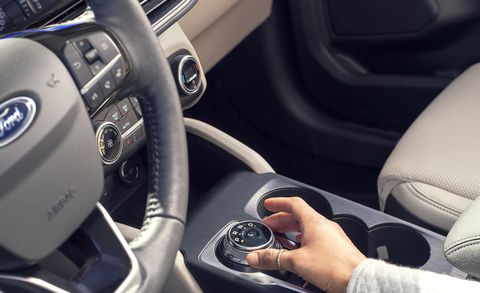Car Companies Have Interesting Ways of Catering to Aging Drivers

Jonathan GelberGetty Images
From the July/August 2022 issue of Car and Driver.
Imagine the day when your car recognizes early signs of dementia or hypertension. Or when vehicle sensors can detect heart anomalies.
It’s not such a far-fetched idea, according to John Lenneman, Ph.D., a scientist who works on an initiative called My Car the Doctor, a joint effort between Toyota’s Collaborative Safety Research Center and the University of Nebraska Medical Center.
While these technologies will not create a diagnosis, they can gather data to send to your digital wearables, capturing information through sensors, cameras, and more, as well as monitor driving behavior for abnormalities in pedal use or speed control. Such innovations are likely to become more common and take on particular significance as the world is aging at dramatic rates. It is projected that one in five Americans will be 65 or older by 2030, and the number of 100-year-olds should grow from 90,000 today to at least three million by 2100.
The new longevity will affect many aspects of the driving experience. In the book The Super Age, author Bradley Schurman points out that in 2018, there were more than 45 million licensed drivers age 65 and older in the U.S., a 60 percent increase since 2000. That number will continue to grow, and more people will be driving longer. Automakers report that their product innovations are designed to help drivers of all ages, yet there are many advances already in use that have a particularly positive impact for the older driver. Examples include lane-departure warnings, new lighting systems to help with night vision, and camera technology that can alert drivers who may have become impaired. Here’s how several car companies are innovating to help an aging population.

Rotary shifter in Ford Escape.
Ford
Ford
At Ford, vehicle architecture manager Jennifer Comfort works with CAD models to simulate how people get in and out of vehicles and determine the best height-to-ground distance or step-over width for future products. Consideration of the optimum location of primary controls and grab handles is relevant for everyone, but older drivers can benefit even more. Ford has already replaced gearshifters in the Escape and the Bronco Sport with rotary dials that are located within easy reach, and in the Mustang, seat-mounted seatbelt straps can be more user-friendly for people with physical reach issues.
Comfort’s colleague Jennifer Prescott, vehicle engineering experience development manager, works on ways to reduce the mental load of driving. That might include offering a better location for steering-wheel controls or cloud-based voice activation. In terms of screens, it could mean larger buttons, fewer options, more space between information, and larger displays for the Sync 4 platform that can vary controls and info depending on the situation.
General Motors
In an industry-first move, General Motors has made Carrie Martin chief engineer for accessibility to eliminate what she calls transportation insecurity for all people. The effort includes keeping older drivers on the road with the help of features that fit their needs.
Martin explained that GM is exploring the aging demographic, as everyone who grows old can experience decreased ability, whether it be related to strength, flexibility, reflexes, or other issues. GM wants to address these needs with new tech that might include facial recognition to start the engine.
Audi
Many Audi features have added benefits for older drivers. Audi has been ahead of the headlight game for years, bringing matrix LED headlights to market in 2013 with the Audi A8 and adding digital matrix LED headlights in 2019. Audi’s most advanced lighting can help shade out light in the car in front of you and even extend light into the next lane during a lane change. While both innovations are beneficial for everyone on the road, they’re especially meaningful safety elements for older drivers with night-vision concerns.
Toyota
Hideki Hada, executive engineer at Toyota’s Advanced Product Planning Office, explained that to try to reduce accidents, the automaker has developed Toyota Safety Sense, an active safety package that is standard on many vehicles and includes pre-collision braking, adaptive cruise control, and lane-departure warning.
In 2022 Lexus LS500h models equipped with all-wheel drive and the Teammate suite of driver-assistance systems, the car will guide itself to the highway shoulder if it detects that the driver is incapacitated. While these features have widespread benefits, Hada said that they are particularly appealing to older buyers, who tend to be more safety-conscious. As a result, Toyota has partnerships to help educate and train older drivers on advanced driver-assistance systems.
Michael A. Clinton is the author of ROAR: Into the Second Half of Your Life (Before It’s Too Late).
This content is created and maintained by a third party, and imported onto this page to help users provide their email addresses. You may be able to find more information about this and similar content at piano.io




